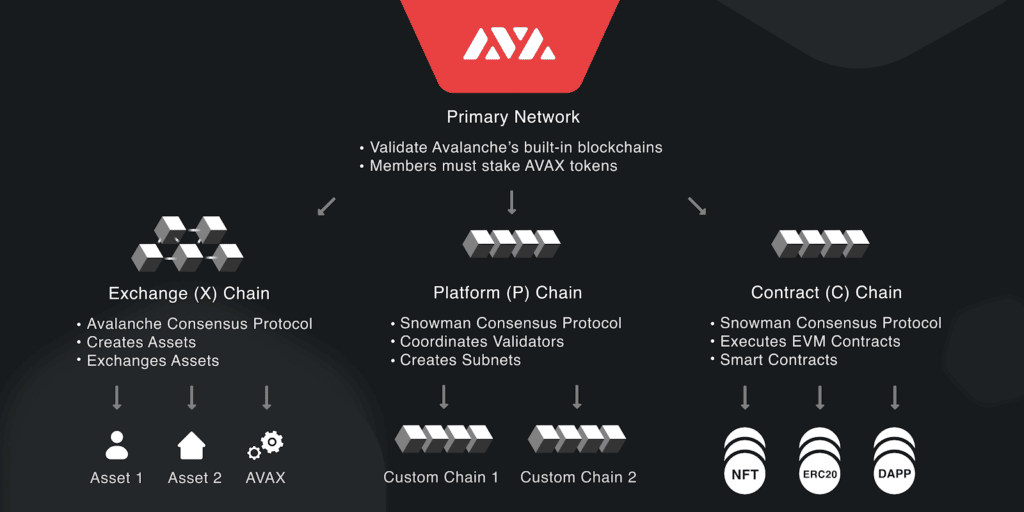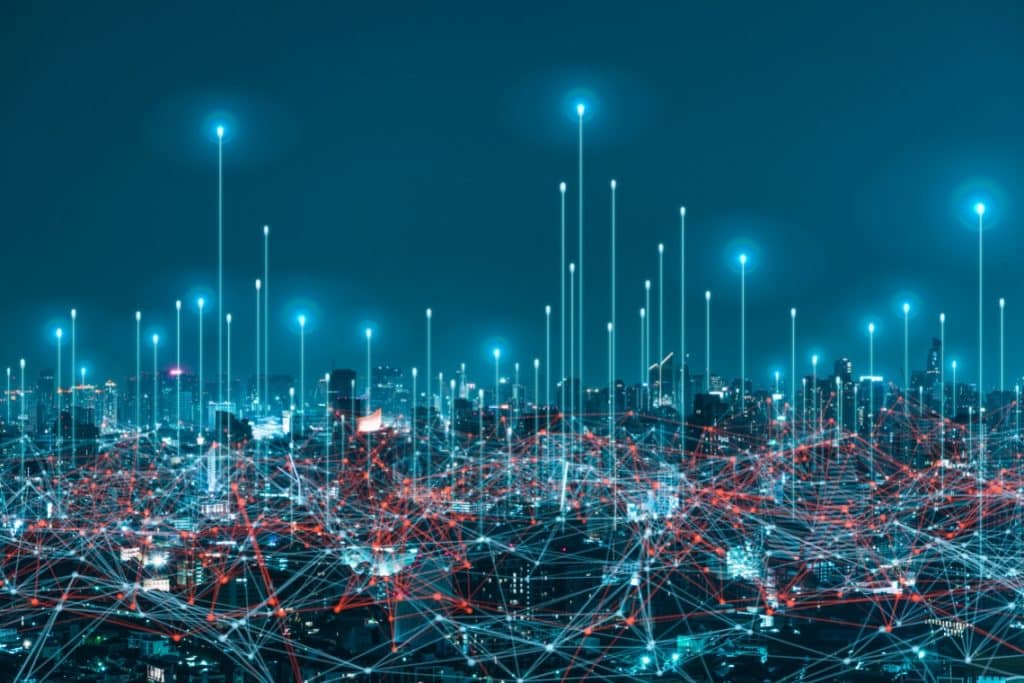What is a subnet in the crypto world?
Securities and Exchange Commission (SEC) doing all it can to delay ruling on Ripple
Polkadot blockchain leading Web3, its social reach exceeds 43 million
LINE launches the Finschia blockchain mainnet
Securities and Exchange Commission (SEC) doing all it can to delay ruling on Ripple
Binance Joins Chamber of Digital Commerce to Support Building a Regulatory Framework for Crypto
ISO 20022: the revolution in financial messaging and the crypto world
Crypto: the latest news on regulations in Italy and Europe
Hack against Ankr protocol: over $5 million in crypto stolen
Crypto hack also causes damage to FTX: $600 million lost. Could it be an internal entity within the company?
Rubic DEX loses $1 million in crypto to hacker attack
Warning about Bitcoin Bank and Intesa Sanpaolo
Switzerland’s Premier Crypto Conference, CryptoSummit.ch, returns in 2023 with a deluxe two-day format in Zurich & Davos.
Tether: the second Plan B Forum in Lugano
Blockchain Life 2023, Dubai, February 27 – 28
Blockchain, Metaverse and NFT ́s arrive in Granada in January with Block Wold Tour
Noku: the interview with the blockchain project in The Nemesis metaverse
Cardano SPO Column: DOG Pool [DOG]
21Shares: how does the platform for investing in crypto work
Andrea Chiampo: an interview with the NFT artist in the metaverse of The Nemesis
Ripple and collaboration with Palau: toward the launch of the national stablecoin
Fidelity to land in crypto and NFT trading, as well as the metaverse
Huobi Global and the efforts that could boost the company’s value
All the news on the collapse of crypto exchange FTX
Mark Cuban: investment in Bitcoin is a smart move
Bitcoin’s bottom close? A look at the price chart
Bitcoin News: 104 BTC moved from QuadrigaCX exchange wallets
Bitcoin ETF: Grayscale may return some of the capital to investors
Negative news about the crypto Ethereum
What is an Ethereum node and how it works
Ethereum staking: unlocking test coming soon
Proof-of-Stake: Ethereum launches “Ethereum climate platform” initiative
Bitcoin mining: another company goes bankrupt
Bitcoin mining: the problems are not over
Hashrate low: Bitcoin mining difficulty collapses
Bitcoin mining revenues are among the lowest ever
Ripple and collaboration with Palau: toward the launch of the national stablecoin
Tether stablecoin is back in the game in Japan
Jewel Bank launches a stablecoin issued on Polygon
Coinbase calls for switch from Tether to USDC
Bitcoin (16k), Ethereum (1.2k), Cardano Price Analyses
Bitcoin, Ethereum: price analysis and predictions
Bitcoin (16k), Ethereum (1.2k), Monero Price Analyses
Bitcoin, Ethereum, and Cardano Price Rebounded Tuesday
Bitcoin, Ethereum, and Shiba Inu All Closed Lower on Monday
Binance: Patrick Hillman says the crypto-exchange has an expiration date
MakerDAO: DAI savings rate increased by 1%
Compound suspends operations of four crypto
The CEO of Binance says the future will be DeFi
FBI warns cryptocurrency investors about DeFi vulnerabilities
The Sandbox: NFT sales in the metaverse down 20% in the last 24 hours
Fidelity to land in crypto and NFT trading, as well as the metaverse
Donald Trump’s NFTs heading for failure? Now down 70%
A Historical Perspective on 3D Game Development Platforms and Their Integration with Ethereum
A Historical Perspective on 3D Game Development Platforms and Their Integration with Ethereum
PokéWorld NFT sued by the real Pokémon Company
Axie infinity: the blockchain-based play-to-earn and NFT game
World Super League prepares to host the first official competition
The Sandbox: NFT sales in the metaverse down 20% in the last 24 hours
“NirvanaVerse”: a new exciting project by The Nemesis and Rai Cinema
The Sandbox, not just land but also sports and crypto
Sandbox and its Sand crypto announce new lands in the NFT metaverse
Opportunities for Artists from The NFT Magazine on Nifty Gateway
Hivearium NFT: artist Roberto Giavarini exhibits at Ceribelli Gallery
Poseidon DAO, Deploy Collection #02 sold out in 2 minutes
Paulo Renftle: an interview with the NFT artist and photographer in The Nemesis metaverse
Tesla stock, Elon Musk’s safe haven asset
Founder of FTX Sam Bankman Fried extradited to the US as FTT collapses below $1
Important news about Twitter and Elon Musk
The Fed will veer to a less hawkish interest rate hikes than it did in 2022
China: the digital Yuan
Venmo amid convenience and controls
Revolut surpasses one million customers in Italy
The digital dollar pilot project begins
How to mine Bitcoin in 2022
The price of Ethereum is very low again
Cryptosmart, cryptocurrency tax problem solved by Italian exchange
Binance will auto-convert the main stablecoins into BUSD
How to use Solidity from Ethereum
Ethereum: how do smart contracts work?
What exactly is a smart contract?
How to use Polygon in DeFi and earn MATIC on AAVE
The price of Ethereum is very low again
Cryptosmart, cryptocurrency tax problem solved by Italian exchange
Binance will auto-convert the main stablecoins into BUSD
UK: new rules for cryptocurrency exchanges
Continuously losing money in the Crypto Market? A 20-year trader share his ways to profit
How to buy, sell and create NFTs on OpenSea. The ultimate guide
How Compound works for lending with cryptocurrencies
Crypto gadgets: new physical device for tracking cryptocurrencies
Bitcoin Beach: the wallet project born in El Salvador expands.
LaLiga Names Divi Official Crypto Wallet for MENA, SEA, & China, in World’s First for a Football League
How to configure a MetaMask wallet
Recover a Bitcoin wallet.dat password in 2 minutes!
By Marco Cavicchioli – 27 Dec 2022
The Avalanche crypto ecosystem allows the creation of subnets: let’s see what a subnet is and how it works.
Avalanche subnets are sovereign networks with their own rules, composed of a dynamic subset of Avalanche validators.
Each subnet can have many blockchains, but each individual blockchain is validated only by a single subnet. A validator in turn can be a member of several subnets, but all subnet validators must also validate the primary Avalanche network.
Subnets were introduced to be able to be independent, that is, with their own execution logic that does not depend on the primary network. In fact, they can independently determine their own pricing scheme, maintain their own state, facilitate their own network and provide their own level of security. They also do not share the execution thread and transactions with other subnets or the primary network, thus enabling easy scalability, with lower latency, higher TPS and lower transaction costs.
In other words, Avalanche’s subnets act independently of the Avalanche network itself, so that they do not interfere with it and, conversely, have no interference from the primary network or other subnets. Of course, they do need their own validator nodes to operate, partly because validators on the main network generally do not also work on subnets.
Summary
In this way, subnets can have their own token economy independent of that of Avalanche, with their own native tokens. They can even launch new blockchains with customized virtual machines.
Since anyone can create an Avalanche subnet, they can also create their own autonomous and particular token economy in this way, with tokens that may not even exist on the main Avalanche blockchain.
The policy on validators can also be customized.
In fact, among its own unique rules, a subnet can have the requirement that validators must be located in a certain country, or that they must pass KYC/AML checks, or that they must hold a certain license.
This makes it possible to build a kind of permissioned blockchain based on a permissionless and trustless ecosystem.
This can be useful for blockchain-based applications that require validators to have certain properties, such as an application that requires large amounts of RAM or computing power: a subnet in this case can require validators to meet certain hardware requirements so that the application does not have reduced performance.
Subnets have virtual machines (VMs) that define the blockchain logic at the application level, specifying the blockchain state, state transition function, transactions, and APIs with which users can interact with the blockchain. Effectively on Avalanche, each blockchain is an instance of a VM.
The advantage is that it is possible to create VMs without having to worry about developing the lower-level logic, such as networking, consensus and blockchain structure, because that is done by the upstream Avalanche ecosystem.
VMs should be considered as projects for individual blockchains, such that one can even use the same VM to create many blockchains with the same set of rules, but logically independent.
The reason VMs were introduced is that usually classic blockchains have only one, with an inevitably predefined and static feature set. Thus those who wanted to create custom decentralized applications with their own rules were forced to create a new blockchain network from scratch.
Ethereum has partially solved this problem with smart contracts, although they depend on a single VM that inevitably imposes restrictions on developers.
Conversely, with Avalanche’s VMs, it is easier to create decentralized blockchains and applications with completely new rules that do not have to depend on external blockchains.
Avalanche’s primary network itself was created with three subnets: Exchange Chain (X-Chain), Platform Chain (P-Chain) and Contract Chain (C-Chain).

The primary network is also a subnet, though a special one, because all members of all subnets must also be members of the primary network, and they must be staking at least 2,000 AVAX.
The primary network operates completely independently of all other subnets, so that they cannot interfere with its proper operation. The only restriction is precisely that the validators of the subnets must also be validators of the mainnet.
It is worth noting that the number of transactions recorded daily on Avalanche’s C-Chain increased greatly during 2022.
Avalanche is a relatively recent project, born in 2020, so the first complete data is only from 2021.
Until mid-August last year, that is, at the height of bull run, there were rarely more than 15,000 transactions per day. But then they suddenly soared, so that by the end of August they had risen to as many as 230,000.
The real boom came from October 2021, with a peak of 1.1 million daily transactions at the end of January 2022.
In May, due to the implosion of the Terra/Luna ecosystem, they plummeted to 250,000, then dropped again to the current 110,000. However, this figure is still almost ten times higher than in July last year.
This means that although the bubble has deflated since May, the use of Avalanche’s Contract Chain is still very high compared to previous years.
By contrast, the price trend of Avalanche’s native cryptocurrency, namely AVAX, has followed a very similar trend to that of other cryptocurrencies.
Ignoring 2020, i.e., the launch year, by January 2021 the price had already risen to $12, with an impressive first spike to $55 the following month.
After a sharp retracement, a large speculative bubble began to inflate in August of that year, leading up to an all-time high of $145 in November.
Then the bubble burst, with the price falling to $57 in early May this year.
The real crash came during the implosion of the Terra/Luna ecosystem, in some ways similar to Avalanche, with the price plummeting to $15 in June and dropping out of the top 10 cryptocurrencies with the largest market capitalization.
Since then, a long phase of downward lateralization has been triggered, leading to new annual lows on 20 December at $11.2. The current price is -92% from the highs, and is in line with that of January 2021.
Born in 1975, Marco has been the first to talk about Bitcoin on YouTube in Italy. He founded ilBitcoin.news and the Facebook group” Bitcoin Italia (open and without scam) “.
Stefania Stimolo – 27 Dec 2022
Reporting the future.
The latest news about Bitcoin, ICO, trading, blockchain and fintech.
Stay updated on all the news concerning cryptocurrencies and the whole world of the blockchain
We use cookies to make sure you can have the best experience on our site. If you continue to use this site we will assume that you are happy with it.
Author
Administraroot


